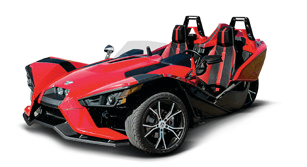
Section 10: Three-Wheeled Vehicles
Section 10: Three-Wheeled Vehicles
This Section Covers
- Types of Three-Wheel Vehicles – 10.1
- Autocycles – 10.2
- Differences Between Two-Wheel Motorcycles and Three-Wheel Vehicles – 10.3
- Be Familiar with Your Vehicle – 10.4
- Body Position – 10.5
- Turning – 10.6
- Hills – 10.7
- Lane Position – 10.8
- Parking at the Roadside – 10.9
- Swerving – 10.10
- Cornering and Curves – 10.11
10.1 – Types of Three-Wheel Vehicles
Traditional two-wheel motorcycles are considered single-track vehicles. Three-wheel vehicles could have either double or triple tracks. Double track vehicles are motorcycles with sidecars, while triple track vehicles (trikes) can have either two front wheels or two rear wheels.

10.2 – Autocycles
The Georgia General Assembly changed the definition of a Class C motor vehicle in O.C.G.A. § 40-5-23(c) to include three-wheel motor vehicles equipped with a steering wheel. They also changed O.C.G.A. § 40-6-311(b) to distinguish motorcycles as motor vehicles controlled by handlebars requiring the operator to straddle the seat.
10.3 – Differences between Two-Wheel Motorcycles and Three-Wheel Vehicles
A three-wheel vehicle is naturally more stable than a two-wheel motorcycle. However, under certain conditions it could “tip over” or lift one of the wheels off the pavement. In order to ensure its stability, you will need to pay attention to your body position, your speed, and how you load a three-wheel vehicle.
They also steer differently. Since three-wheel vehicles cannot lean, the front wheel needs to be pointed in the direction you want the vehicle to go.
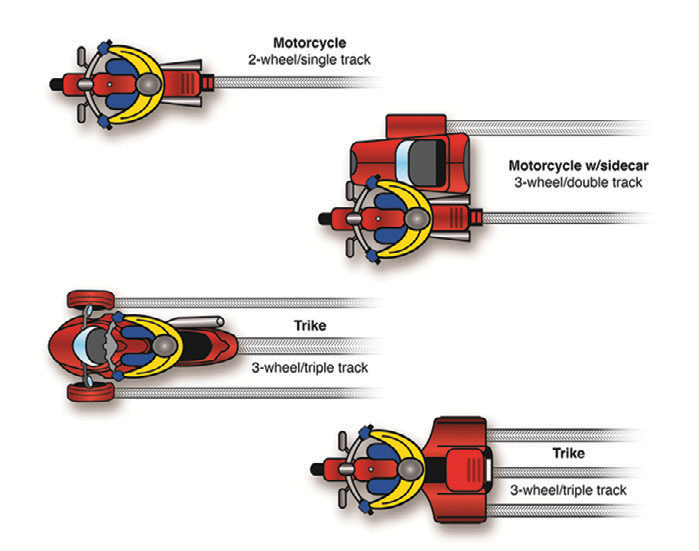
10.4 – Be Familiar with Your Vehicle
Make sure you are completely familiar with the three-wheel vehicle before you take it out on the street. Be sure to review the owner’s manual. Remember, three-wheel vehicles take up more space than two-wheel motorcycles and therefore you will need more space to maneuver.
10.5 – Body Position
Your body position is important for control on a three-wheel vehicle. You should be able to reach both handgrips comfortably while leaning and shifting your weight in turns.
10.6 – Turning
Approach turns and curves with caution. If you enter a turn too fast you may end up crossing into another lane of traffic, lifting a wheel, or going off the road. Oversteering could cause the vehicle to skid and you could lose control.
10.7 – Hills
When riding uphill on a three-wheel vehicle, some weight will shift to the rear, causing the front of the vehicle to become lighter. This weight shift reduces the traction on the front wheel(s) for steering and braking. You should shift some of your body weight forward to maintain steering control.
When riding downhill, gravity increases the amount of braking force required to slow or stop the vehicle. It is important, therefore, to begin slowing earlier for cornering and stopping.
10.8 – Lane Position
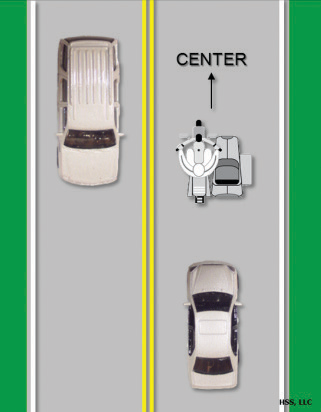
The width of a three-wheel vehicle is similar to the width of some automobiles, therefore, unlike a two-wheel motorcycle, you are limited in lane positioning. Keep toward the center of the lane and within the lane markings.
Lane positioning when riding in groups is also an important consideration. Ride single file and always maintain a safe margin, four seconds minimum, between vehicles.
10.9 – Parking at the Roadside
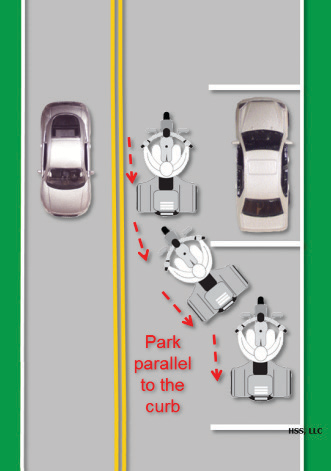
Position your vehicle in a parking space so you are parked parallel to the curb. Set the parking brake or leave it in gear to keep it from rolling. Parking parallel to the curb will facilitate pulling away from the curb and entering the lanes of traffic.
10.10 – Swerving
A three-wheel vehicle is not as maneuverable as a two-wheel motorcycle, so it is important to look well ahead to avoid the need for any sudden turns or swerving. Swerving is seldom the best option to avoid a collision on a 3-wheel vehicle. If swerving is required, brake either before or after the swerve, never while swerving. You should not attempt swerving without proper training. If you need to avoid a collision, the best option may be hard braking.
Brake, then Swerve
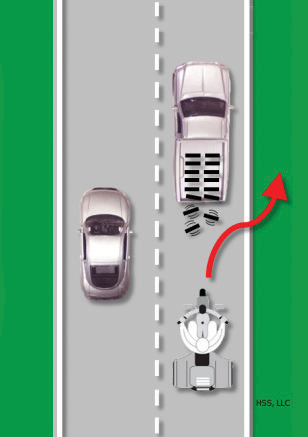
Swerve, then Brake
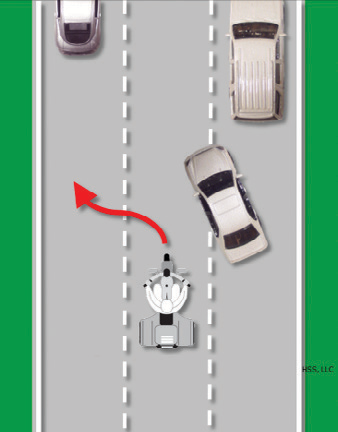
10.11 – Cornering and Curves
When riding through curves, remember to stay within your lane.
Adjust your speed before entering a curve. You may need to lean or shift your weight in the direction of the turn to avoid causing any of the wheels to leave the ground and, possibly, losing control.
Test Your Knowledge
- What are two major differences between two-wheel motorcycles and three-wheel vehicles? A three-wheel vehicle:
- Is less stable, and is steered by pointing the front-wheel in the direction of the turn.
- Is more stable, but could tip-over and is steered by pointing the front-wheel in the direction of the turn.
- Is more stable, but could tip-over and is steered by pointing the front-wheel in the opposite direction of the turn.
- When riding a three-wheel vehicle in groups, you should:
- Ride single file and maintain a four-second following distance.
- Ride in staggered formation and maintain a four-second following distance.
- Ride single file and maintain a one-second following distance.
- When parking a three-wheel vehicle, you should park:
- At a 90-degree angle to the curb.
- On the sidewalk.
- Parallel to the curb.
- What is true of swerving on a three-wheel vehicle?
- Swerving is the best option to avoid a collision.
- When swerving, you should brake and swerve at the same time.
- It should not be attempted without proper training.
Answers
- B – see the section "Differences between Two-Wheel Motorcycles and Three-Wheel Vehicles"
- A – see the section "Lane Position"
- C – see the section "Parking at the Roadside"
- C – see the section "Swerving"